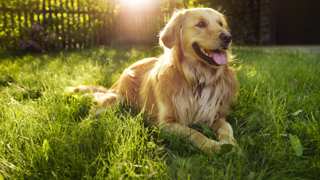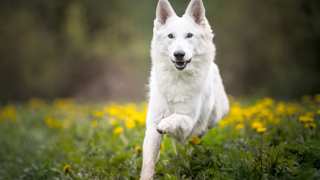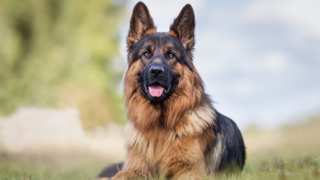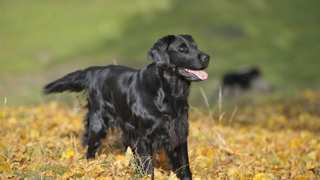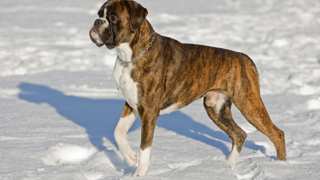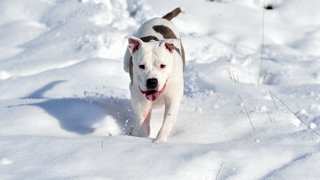This breed is athletic and muscular, so Labrador Retriever exercise needs are, in a word, huge. These dogs can begin physical activity as early as three months of age, but Labrador puppy exercise should not be as intense (or as long in duration) as that of mature dogs. By the time they're at or near full maturity (18-24 months), a full day's exercise in 1-1½ hour sessions should be okay.
And odds are, a mature Lab will wear itself (and you!) out. This breed was developed to spend all day as a working animal, so a Lab will typically have boundless amounts of energy. Canine experts say that it's up to Lab owners themselves to decide when to stop the physical activity--because these dogs surely won't! Other than that, no real precautions exist in exercise for Labrador Retrievers. They can exercise in most types of weather, too--just make sure to provide plenty of water, especially in hotter temperatures.
Be aware, though, that an under-exercised Lab will be hard to handle. If these dogs don't receive plenty of physical and mental stimulation, they'll become extremely bored and hyperactive: they'll dig, bark, bound around, and chew any- and everything they can get their mouths on. Labs also have high tendencies for obesity, so a Lab will quickly become overweight if not exercised enough.
Just a few of the seemingly infinite number of exercises for Labrador Retrievers:
- Jogging: Labs make excellent running companions
- Swimming: Early Labs were retrievers for fishermen, so these dogs will love a good, long swim
- Hide and Seek: Great indoor activity for rainy days
- Fetch/Frisbee: A Lab will chase a ball or Frisbee until your arm gets tired of throwing it
- Hiking: These dogs can hike for miles
- Biking: Loop the leash around the bike's handlebar and go--a Lab will keep up!
Because Labs' exercise needs are great, it'll be good for owners to have frequent access to outdoor areas. When inside, make sure to have a ball or chew-toy for your Lab to fetch and chew on to release any excess energy. And if possible, try to set a daily exercise schedule for a Lab, such as one or two exercise sessions during the day, followed by a long walk, jog, or bike in the evening. One of the great things about these dogs is that they're athletic, intelligent and versatile, and can participate in many physical activities right alongside their owners.

